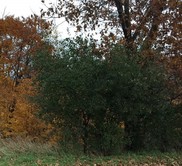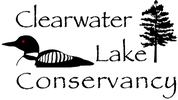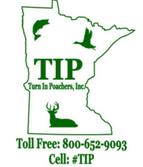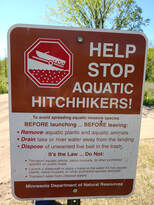What is Buckthorn
Common, or European buckthorn, and glossy buckthorn are the two non-native, invasive buckthorn species found in Minnesota. Common buckthorn was first brought here from Europe in the mid-1800s as a popular hedging material. It escaped and became a nuisance plant, forming dense thickets in forests, yards, parks, and roadsides. It crowded out native plants and displaced the native shrubs and small trees in the mid-layer of the forest where many species of birds nested. Today, common buckthorn is found in nearly every Minnesota county, even though the sale, transport, and movement of these plants is prohibited.
It can thrive through drought and even in low-sunlight areas. Both buckthorns are spread easily and rapidly by birds that feed on its fruit and carry the seeds for miles before excreting them in far-away locations where the seeds can grow into new buckthorn infestation
It can thrive through drought and even in low-sunlight areas. Both buckthorns are spread easily and rapidly by birds that feed on its fruit and carry the seeds for miles before excreting them in far-away locations where the seeds can grow into new buckthorn infestation
 Photo by Jeff Zernov
Photo by Jeff Zernov
Buckthorn is a problem because it
- Out-competes native plants for nutrients, light, and moisture
- Contains a mild toxin that is harmful to native plants and is a laxative for birds and humans
- Degrades wildlife habitat
- Threatens the future of forests, wetlands, prairies, and other natural habitats
- Contributes to erosion by shading out other plants that grow on the forest floor
- Serves as host to other pests, such as crown rust fungus and soybean aphid
- Forms an impenetrable layer of vegetation
- Lacks "natural controls" like insects or disease that would curb its growth
How to Identify it
Common buckthorn is easily found in late fall when many native shrubs and trees have lost their leaves. Common buckthorn will often have green leaves through November. Glossy buckthorn does not stay green as late as common buckthorn. Caution! Many native trees look similar to buckthorn and some native trees hold their leaves into the winter. Before you cut, make sure you know you are cutting buckthorn and not a native tree.
What Can I do
First thing you want to do in ensure that you really have Buckthorn. In attempt to control the invasive, many people are
being over zealous and attaching native plants unintentionally. Several native plants commonly thought to be buckthorn are High-bush cranberry, Nannyberry, Chokecherry, Grey dogwood, Pagoda dogwood, American hazelnut and American hornbeam.
Once you know that you really have Buckthorn, now what do you do? Where do you begin?
One way to start is by targeting your buckthorn plants that are producing fruit. Remove these fruit-bearing trees first and that will reduce the amount of seeds added to your soil each year. Buckthorn seeds in the soil can continue to germinate for many years. Buckthorn management is a multi-year commitment. Once you’ve removed buckthorn plants you will need to follow up over time to remove the plants that continue to germinate.
being over zealous and attaching native plants unintentionally. Several native plants commonly thought to be buckthorn are High-bush cranberry, Nannyberry, Chokecherry, Grey dogwood, Pagoda dogwood, American hazelnut and American hornbeam.
Once you know that you really have Buckthorn, now what do you do? Where do you begin?
One way to start is by targeting your buckthorn plants that are producing fruit. Remove these fruit-bearing trees first and that will reduce the amount of seeds added to your soil each year. Buckthorn seeds in the soil can continue to germinate for many years. Buckthorn management is a multi-year commitment. Once you’ve removed buckthorn plants you will need to follow up over time to remove the plants that continue to germinate.
Ways to prioritize management:
- Remove trees with fruit first
- If you have areas with relatively few buckthorn trees, start your management there and keep the nice areas nice. Then work towards the areas that are more heavily infested.
- Continue to follow-up in the areas where you have previously removed buckthorn.
Ways to control.
- Hand pulling: If the tree less than 3/8 inch in diameter, plants can be removed by hand. Small seedlings can be pulled and will not re-sprout. There are tools available to help pull young trees two to consider are the "Uprooter" and the "Root Talon".
- Cutting: Buckthorn plants that are two inches in diameter or larger are best controlled by cutting the stem at the soil surface and then covering or treating the stump to prevent re-sprouting. Chemical control options for cut stumps include treating the stump immediately after cutting (within 2 hours) with a herbicide containing triclopyr or glyphosate (Roundup) to prevent re-sprouting.
- Basal Bark Treatment: Basal bark herbicide applications are made using a low-pressure backpack sprayer to thoroughly wet the lower 12–18 inches of the stem using a solid cone or flat fan nozzle. To be effective, it is important to thoroughly wet the entire stem, root collar area, and any exposed roots. Basal bark herbicides use an oil carrier (commercially available basal oil, diesel fuel, no. 1 or no. 2 fuel oil, or kerosene) to penetrate the bark. Trees with old or rough bark may require increased coverage to be effective.
MN DNR links
The MN DNR Buckthorn web page has some great information browse around these links for some great advise.
- Identification
- Regulations - It is illegal to import, sell or transport in MN
- Management
- What to plant as an alternative


